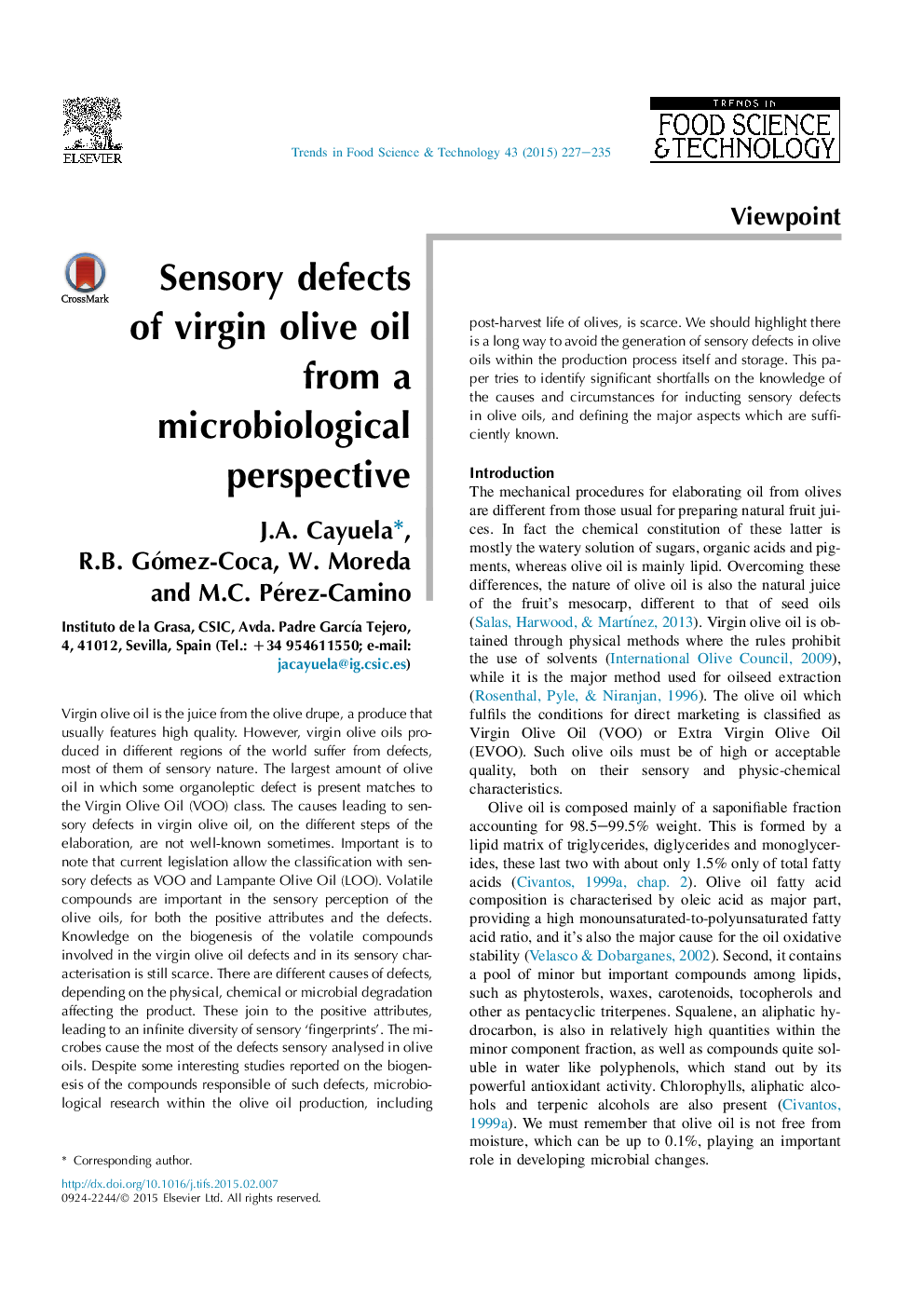| Article ID | Journal | Published Year | Pages | File Type |
|---|---|---|---|---|
| 2099774 | Trends in Food Science & Technology | 2015 | 9 Pages |
•Microbiological research within the process of olive oil production is scarce.•An important percentage of the olive oils have sensory defects due to fermentations.•Progress is needed to prevent fermentation defects in olive oil.
Virgin olive oil is the juice from the olive drupe, a produce that usually features high quality. However, virgin olive oils produced in different regions of the world suffer from defects, most of them of sensory nature. The largest amount of olive oil in which some organoleptic defect is present matches to the Virgin Olive Oil (VOO) class. The causes leading to sensory defects in virgin olive oil, on the different steps of the elaboration, are not well-known sometimes. Important is to note that current legislation allow the classification with sensory defects as VOO and Lampante Olive Oil (LOO). Volatile compounds are important in the sensory perception of the olive oils, for both the positive attributes and the defects. Knowledge on the biogenesis of the volatile compounds involved in the virgin olive oil defects and in its sensory characterisation is still scarce. There are different causes of defects, depending on the physical, chemical or microbial degradation affecting the product. These join to the positive attributes, leading to an infinite diversity of sensory ‘fingerprints’. The microbes cause the most of the defects sensory analysed in olive oils. Despite some interesting studies reported on the biogenesis of the compounds responsible of such defects, microbiological research within the olive oil production, including post-harvest life of olives, is scarce. We should highlight there is a long way to avoid the generation of sensory defects in olive oils within the production process itself and storage. This paper tries to identify significant shortfalls on the knowledge of the causes and circumstances for inducting sensory defects in olive oils, and defining the major aspects which are sufficiently known.
